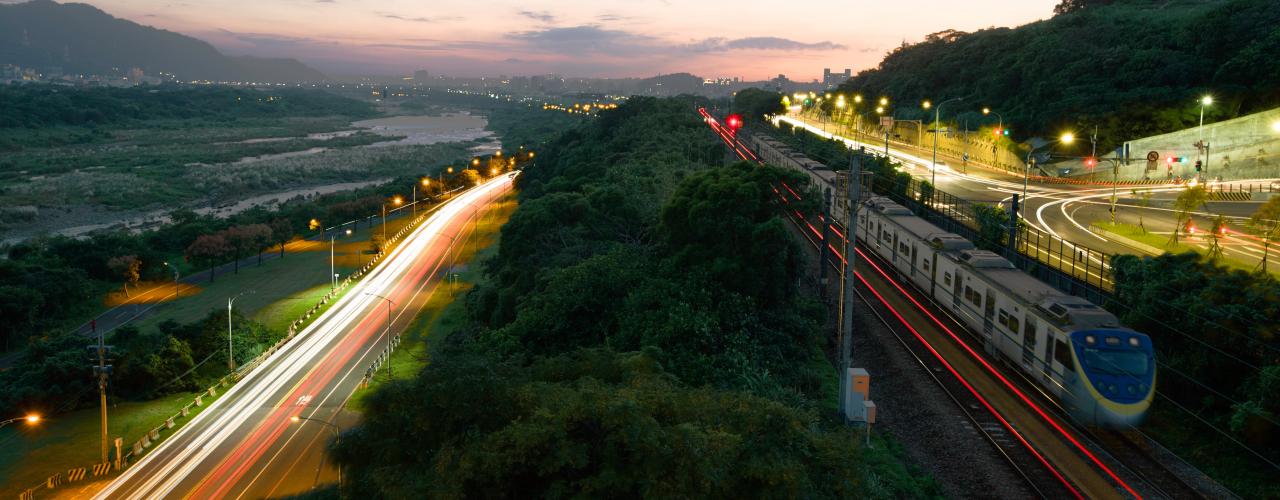The United Nations Climate Change Conference – COP28 – is taking place from today (30 November 2023), in Dubai. Exactly 8 years ago, at COP21, the world agreed to limit global warming to 1.5°C compared to pre-industrial levels by 2050. To keep on track, carbon emissions need to be cut by half by 2030. The European Green Deal sets ambitious targets per sector to achieve this.
When the European Institute for Gender Equality (EIGE) published their Gender Equality Index in October 2023, they put a special focus on exploring the links between gender equality and the European Green Deal.
According to the report, gender and intersecting inequalities shape the way in which individuals contribute to and are impacted by climate change.
CO2 emissions and the transportation sector: Where does the gender dimension come in?
Transport is responsible for nearly 30% of the EU’s total CO2 emissions, of which 72% comes from road transport. It is the only sector where emissions have risen since 1990. Looking globally, cities generate around 70% of carbon emissions, making them key drivers in the race to net zero.
Many cities have developed their own climate plans – sometimes more ambitious than the national targets. Given the dominance of road transportation in carbon emissions, a key pillar is shifting behaviour from personal car use to public transport. Here’s where the gender dimension becomes important: we know from URBACT’s Gender Equal Cities report that men and women use transport differently.
- Women use more public transport than men.
- Men drive more than women.
- Women have multiple stops per trip to a greater extent than men, who generally travel from A to B.
At the publication launch of the EIGE Gender Equality Index, URBACT’s Jenny Koutsomarkou shared how cities are at the forefront of the gender/climate nexus. She spoke at the EIGE webinar on ‘Moving towards a green and gender equal transport in the EU’ to share the practical ways cities can ensure their sustainable mobility plans are gender equal. “Cities need to take three aspects into account when it comes to urban mobility– safety, accessibility and affordability,” Jenny explained.

Imagine a world where men travelled like women...
For an enlightening example of sustainable, gender equal mobility, we can look at Umeå, who led the URBACT GenderedLandscape network. In this Swedish city, all planning and transport decisions are taken after looking into gender-disaggregated data. Their mobility survey informs the municipality of who travels when, where and by which means. So they know that 60% of the trips in the city are taken by sustainable means (walking, cycling, public transport), and the target is 65%. Yet, looking at the gender breakdown, Umeå saw that 66% of women travel sustainably, compared to 55% of men. So, if men travelled like women, the city targets would already be met.
This data has led Umeå to target their actions to male-dominated workplaces, to have the most impact. Through observational studies and interviews with businesses and workers, city staff explored infrastructure issues, like location of bus stops and regularity of services, but also wider issues around time-use, share of domestic responsibilities and family care, and how they are split between men and women. As a direct result of these findings, the city amended its bus timetable and created additional bus stops. Additional bike parking was created on business premises, and some companies give extra days holidays for those who travel sustainably. Ultimately, this improved cooperation between the public and private sector to shift norms with employees.
Umeå is one example, and evidently the interventions would play out differently in cities across Europe. Nevertheless, the emphasis on collecting sex-disaggregated data allows each city to understand the different dynamics at play, so that they can assess and monitor the gender-related impacts of the green transition.
Read more on gender equality in city planning and related topics:
- Why are we still talking about gender equality? FEMACT-Cities Action Planning Network
- Introducing gender-sensitive public procurement URBACT online training course
- URBACT Gender Equal Cities Report 2022
- WalknRoll URBACT’s resources on shifting the mobility paradigm in Europe


